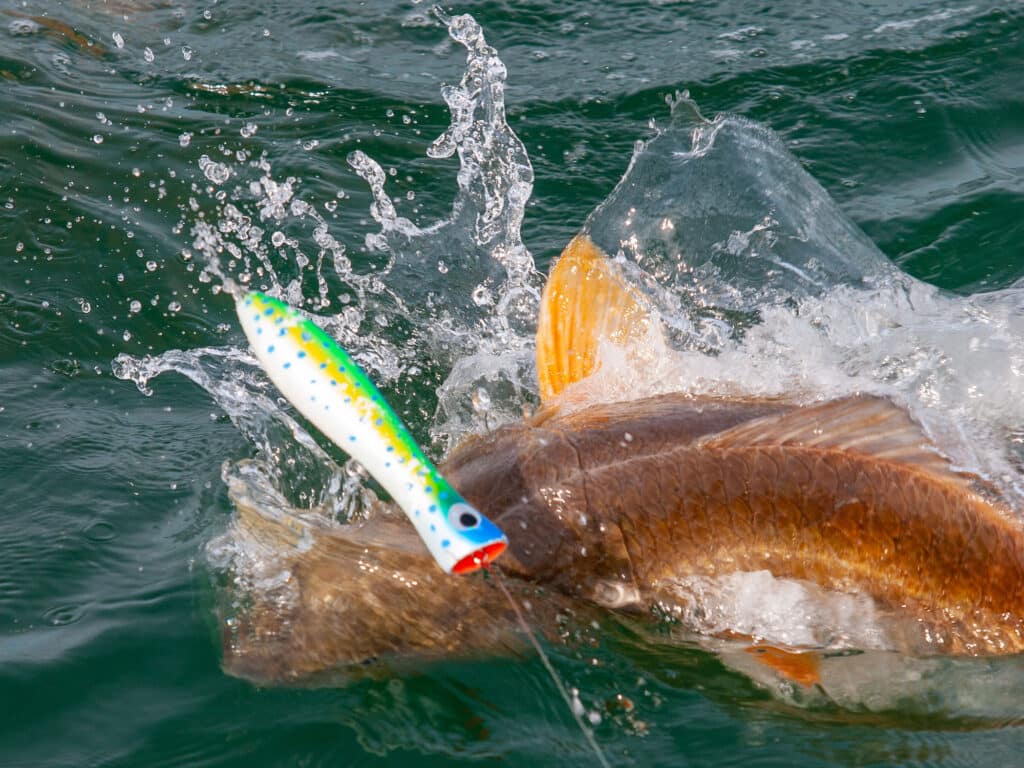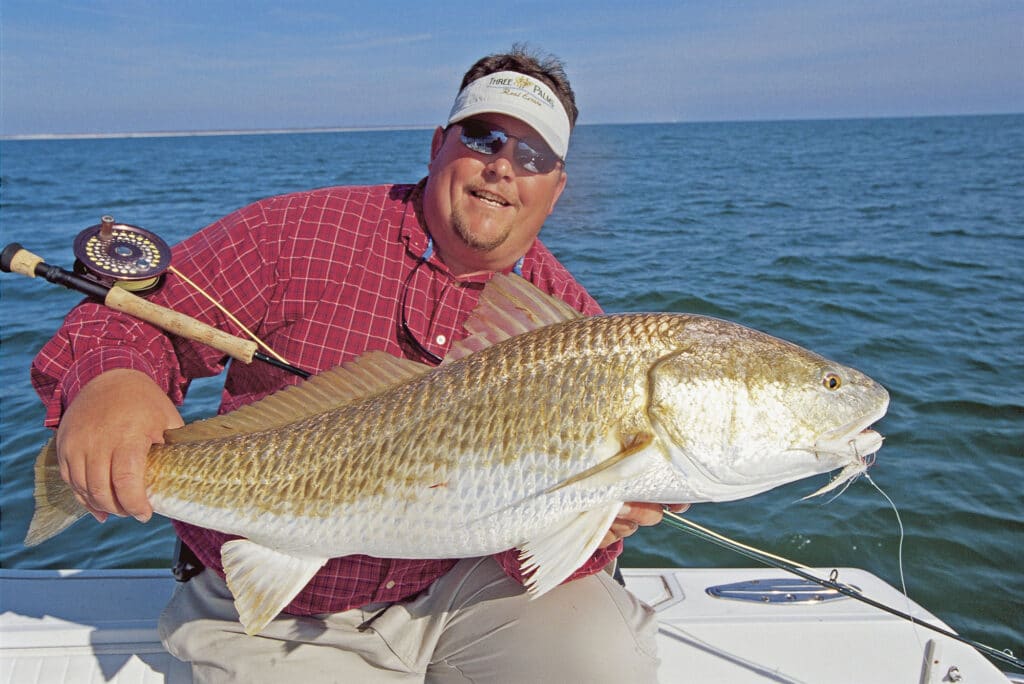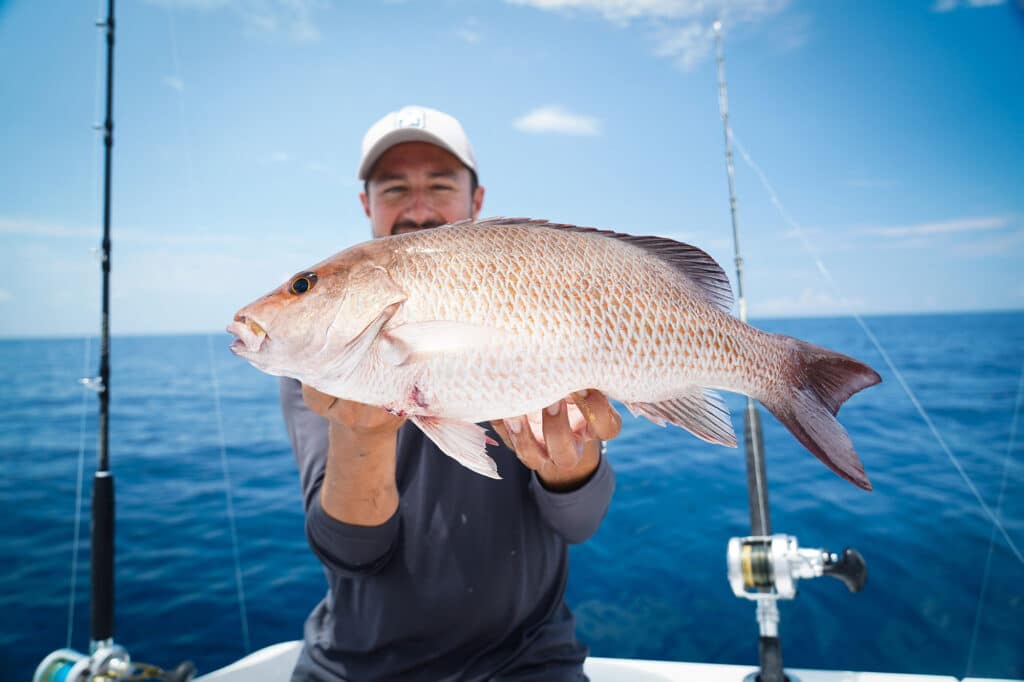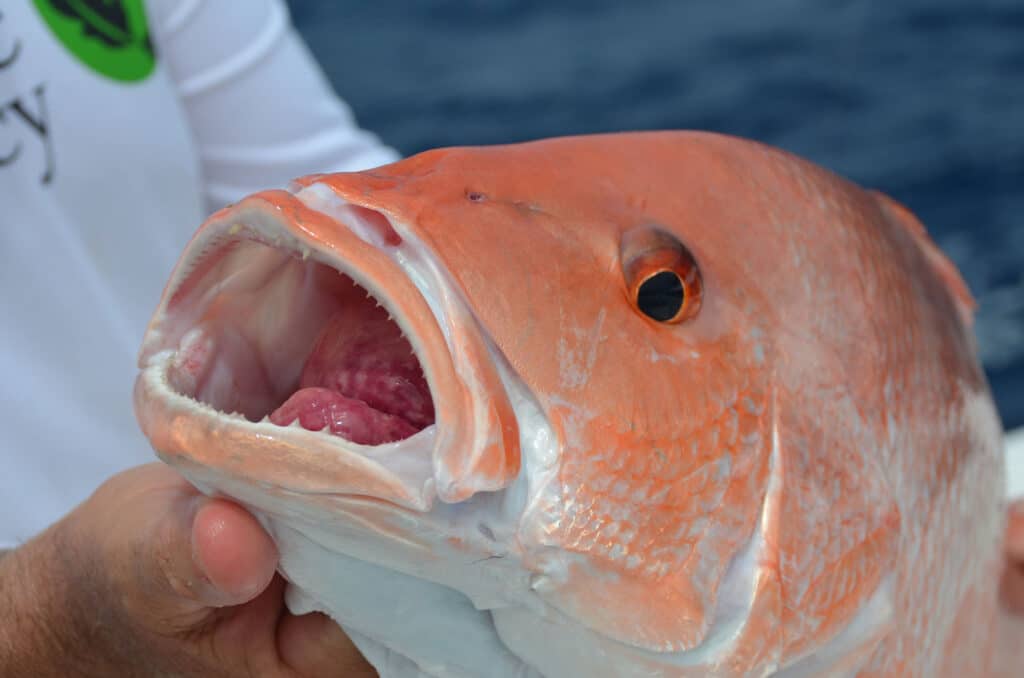
Alabama’s Gulf Shores and adjacent Orange Beach feature one of those stretches of coastline that look absolutely fishy. And it is. I’ve been there and experienced it. For example, I’ll never forget a memorable bite, casting XXL topwater lures to schooling bull reds — all 20- to 40-pound fish — just offshore the beaches. I was fishing maybe a quarter- to a half-mile off the beach with Capt. Clif Jones. For several hours I gaped in awe as monster redfish climbed all over each other to be the first to clobber my big surface lure on every cast. The January morning was icy cold, but the reds didn’t mind, and the stiff north wind blew directly off the beach, so we enjoyed calm water.
That was a quarter-century ago. These days Jones (who has recently retired after more than three decades as an active guide out of Orange Beach) sees a paradox with the bull reds on the outside beaches. On the one hand, there’s more bait than ever, so the fish are more scattered versus sitting on fewer, tight groups of bait. On the other hand, “There are also more redfish around now than ever,” he says.
Given my experience, I tend to think of redfish when I consider this stretch of Alabama coast. But while red drum are one of the premier species, there’s so much more. Anglers here tend to separate their fisheries into three categories, relative to the shore: inshore, nearshore and offshore.

Fishing inshore refers to the extensive system of back bays, channels and flats. So many bays — Perdido to the east and massive Mobile Bay to the west, with smaller bays in between — offer year-round fishing in protected waters. Primary targets are redfish, speckled trout, flounder and sheepshead, plus at times Spanish mackerel, jacks and more. You’ll find the best inshore fishing spring and fall. Summer can be productive, but these days Gulf Shores and Orange Beach have become such a popular summer destination that, Jones says, it’s simply too busy and crowded much of the time during the school’s-out season.
Nearshore means fishing along the beaches and out a short distance, but not as far as deep water. Expect plenty of variety depending on the season, conditions, bait and other variables — both red and black drum can be thick and big, particularly in colder months, with 15- to 40-pound fish typical. Other game fish you’ll find in nearshore waters include cobia (especially in the spring), bluefish, Spanish mackerel, kingfish, gray snapper, blacktip shark, triggerfish, tarpon and more.

Connecting inshore and nearshore waters are inlets, notably Perdido Pass at the east end of Orange Beach. With so much tidal flow, Gulf passes like this, and the area just outside the passes, tend to be magnets for bait and predators. These areas also may be crowded in summer, but an angler is likely to find fish in the pass any month.
For anglers venturing offshore and willing to make the run to deeper water (figure 15 to 40 miles), besides scattered rocks and some natural hard bottom, there are oil rigs and artificial reefs. Out here, anglers look for the usual suspects in the northern Gulf: billfish, yellowfin and blackfin tuna, at times mahi and wahoo, red snapper, amberjack, gag grouper, and grey triggerfish. For those making a directed effort, swordfish are available too.

While sailfish can be a pretty frequent catch, blue water here is dominated by white marlin. Jones says, “We can have great numbers of white marlin. I’ve had days with 12 to 14 bites.” The crowds of summer visitors aren’t a factor offshore, and summer is definitely prime time.
For the most part, the sea floor of the northern Gulf is pretty austere — flat, featureless mud and sand. In that setting, any sort of reef will be a tremendous fish magnet. So it’s not surprising that the artificial reefs off Gulf Shores and Orange Beach are so productive. It might be surprising, however, to learn that in its rather short length of Gulf coastline — just 53 miles — the state of Alabama boasts the largest artificial reef program in the U.S. Reefs can be sunken ships, barges, tanks, bridges, rubble, repurposed concrete culverts and pipes, and more. You can find literally thousands of reefs listed at outdooralabama.com, including the .gpx files to import directly into GPS hardware, as well as interactive maps and a downloadable complete guide to Alabama’s artificial reefs. While some of the artificial reefs sit 50 miles or more offshore, others — known as circalittoral reefs — can be in less than 10 feet of water near shore.

A boat is hardly requisite for fishing coastal Alabama, thanks in part to the Gulf State Park Pier, one of the longest on the Gulf coast at 1,540 feet. Then there are the Orange Beach jetties, offering access to great habitat and moving water, as well as endless beaches for surf fishermen.
Anglers visiting these waters can drive via Interstate 10 or 65. Many major cities are within an easy day’s drive. Commercial airlines serve nearby Pensacola (Florida) and Mobile (Alabama) regional airports. New Orleans international airport is about 3 ½ hours down the road. With so much growth in tourism here, you can be sure the choice of accommodations of all types is extensive. Keep in mind that from roughly Memorial Day through Labor Day, things are booked up long ahead.
Those who plan to book a charter for one or more days fishing can choose from more than 100 operations, from big offshore convertible sport-fishing yachts to fast, open center consoles for inshore and nearshore. Private boaters who trailer in or boat in will discover a wealth of full-service marinas. Many offer launch ramps, plus public launch areas are scattered throughout the bays. For general information, visit gulfshores.com.









